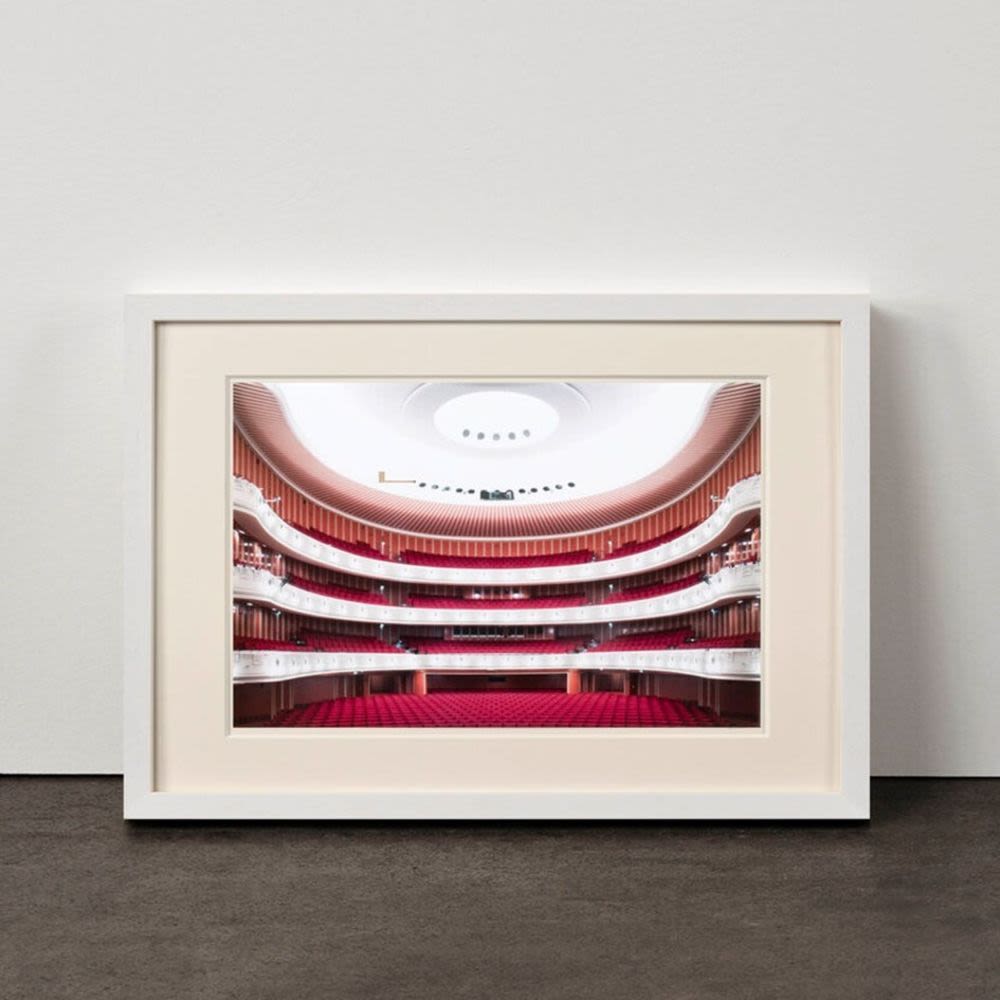Candida Höfer
Candida Höfer (b. 1944, Eberswalde, Germany) is internationally acclaimed for her large-scale color photographs of architectural interiors that explore the cultural and psychological dimensions of public space. A prominent member of the Düsseldorf School, Höfer studied at the Kunstakademie Düsseldorf from 1973 to 1982, where she was mentored by influential photographers Bernd and Hilla Becher—alongside peers such as Andreas Gursky, Thomas Struth, and Thomas Ruff.
Höfer is best known for her rigorously composed images of libraries, museums, concert halls, palaces, and other institutional interiors. Often devoid of people, her photographs prompt viewers to reflect on the function of these spaces and the presence of their absent users. As she notes, “What people do in these spaces—and what these spaces do to them—is clearer when no one is present.” Her work investigates how architecture shapes experience, conveying both grandeur and intimacy through subtle light, symmetry, and structure.
Since the 1980s, Höfer’s work has been widely exhibited in Europe, North America, and beyond. She has had solo exhibitions at the Louvre, Hermitage Museum, Museum Folkwang, Irish Museum of Modern Art, and Museo Amparo, among others. Her work has been featured in major group exhibitions including Documenta XI, MoMA New York, and the Guggenheim Bilbao. In 2003, she represented Germany at the Venice Biennale.
Höfer has received numerous accolades, including the Sony World Photography Award for Outstanding Contribution to Photography (2018) and the Käthe Kollwitz Prize from the Academy of Arts, Berlin (2024). Her photographs are held in leading international collections and continue to shape conversations around the role of architecture, memory, and cultural identity.
Candida Höfer lives and works in Cologne, Germany.
“ I do my work. My work is my statement. Generally, I think, there is too much interest in what an artist has to say. Or what she or he looks like, instead of what she or he does. „


